I completed and passed my PADI Open Water Diver course in early April. I didn’t blog about it coz I didn’t have any photos. The one-time-use water-proof camera works only up to 15 Metres deep, but our dive could go up to 18M and I also wanted to keep my hand free during the training.
Sabah has some of the most beautiful underwater spots in the world. Being a Sabahan, it is such a sin not to appreciate and photograph it. Besides, there are less people doing underwater photography in KK. Underwater Photography is extremely challenging. After I took the Digital Underwater Photography specialty course last month, I agree that the underwater photographers really deserve a few thousands dollars for a good photo, it is not as easy as you think.
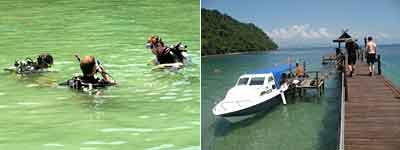
My Underwater Photography training took only 1 day near Gaya Island base station. In the morning, we were doing shore diving, taking photos in shallower water. Below is the photo of clown fishes, which are the cousin species of Nemo. The coral looked like white noodles being surrounded by “Ikan Bilis”, yummy… There is one female clown fish in each group. If it dies, the biggest male clown fish in the group will “turn into” female and take over her place. Amazing huh?
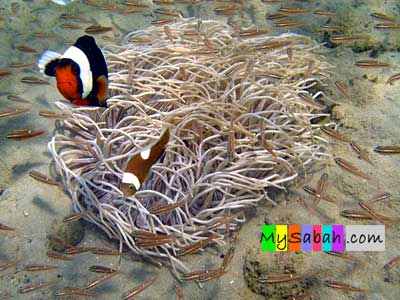
The diving experience would be far more interesting if I knew what I looked at. When comes to underwater world, I am really MCC (blur) and can’t even tell the difference between seahorse and pipefish. I am so glad to have Richard as my “Sifu” (instructor). You will be dearly impressed by his underwater photos at his Downbelow web site. He is also very nice and positive.
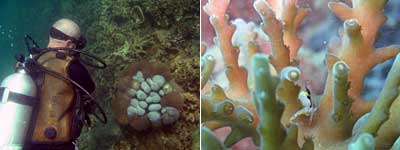
The camera that I used for this course was Canon Powershot A640 IS (rented) with the underwater housing. It is not as good (expensive) as a professional SLR camera but can do a reasonable good job with proper setting (and with plastic casing a lot more lighter than the aluminum casing for SLR). The light loses its red and orange colors under deeper water, so we need to set the white balance in your camera to compensate the colors. Otherwise your photos will look overly blue or green.
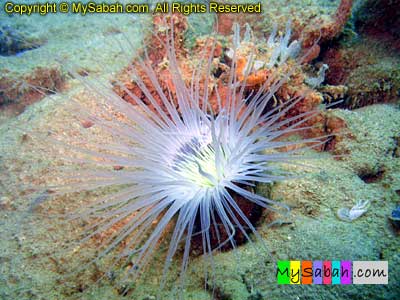
Then we moved on to boat diving at Extenstion Reef (12M-18M deep) off Gaya Island in the afternoon. To do well in underwater photography, an excellent skill in buoyancy (sink & float level) control is a must. I knew my buoyancy control really sucked when it came to 2 most important techniques: (1) Fin pivot method (keep upper half of the body floated a few inches above the sea floor), and (2) Hovering (hold-on at a fixed spot motionless, without sinking and floating). See the photo at the right below, do you believe that it is an animal, not a plant?
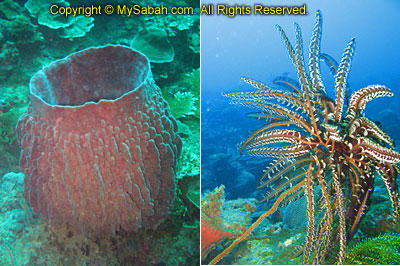
With poor control in buoyancy, I would have problem to keep my body (and camera) still to take photo without touching the sea floor. Touching the bottom would damage the fragile corals or stir the sandy bottom, then photography becomes “photo-bombing.” Richard demo the correct photo-taking approach in the water and showed me some interesting subjects for photo-shooting.
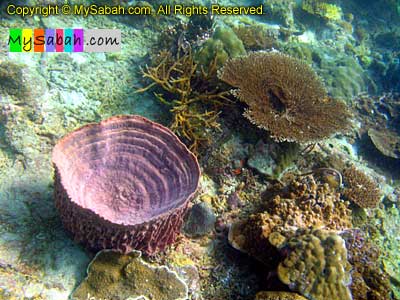
Another challenge is the backscatters (reflection from the tiny particles). Under low light, I was tempted to use camera flash to light up the subject. However, if the water is not clear, the small particles would reflect the light, making many those small and blur white dots in my photos. If you don’t know what I mean, try to take picture under very misty or dusty environment.
The last highlight in our dive is the big cuttlefish (see photo below) that can change colors to communicate with others. It was hiding under a big “umbrella” coral. Richard had to hold my legs to let me photograph it in upside down position. So funny… if he didn’t do that, I would bump into the hundred-year-old coral and crushed it.
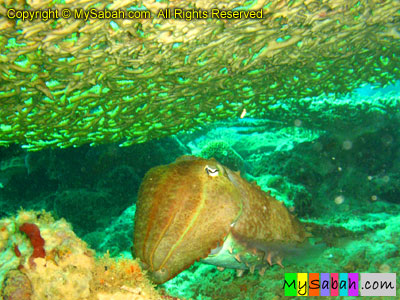
Now I can call myself an Underwater Photographer. Haha… may be not that soon. Looking at my photos here, most can see that they are not good enough. The course only teaches me the right methods to photograph. I really need a lot of practices to master the skills. If possible, I will try to dive regularly. Hai… need to “raise fund” to get my underwater camera first. The compact camera and housing kit will coast RM2,000, and plus additional RM1,000+ if I also get an external strobe/ flash (for better colors and lighting). Sigh… RM3,000+ will be a long way…
Photos taken in Gaya Island, Sabah, Malaysia Borneo
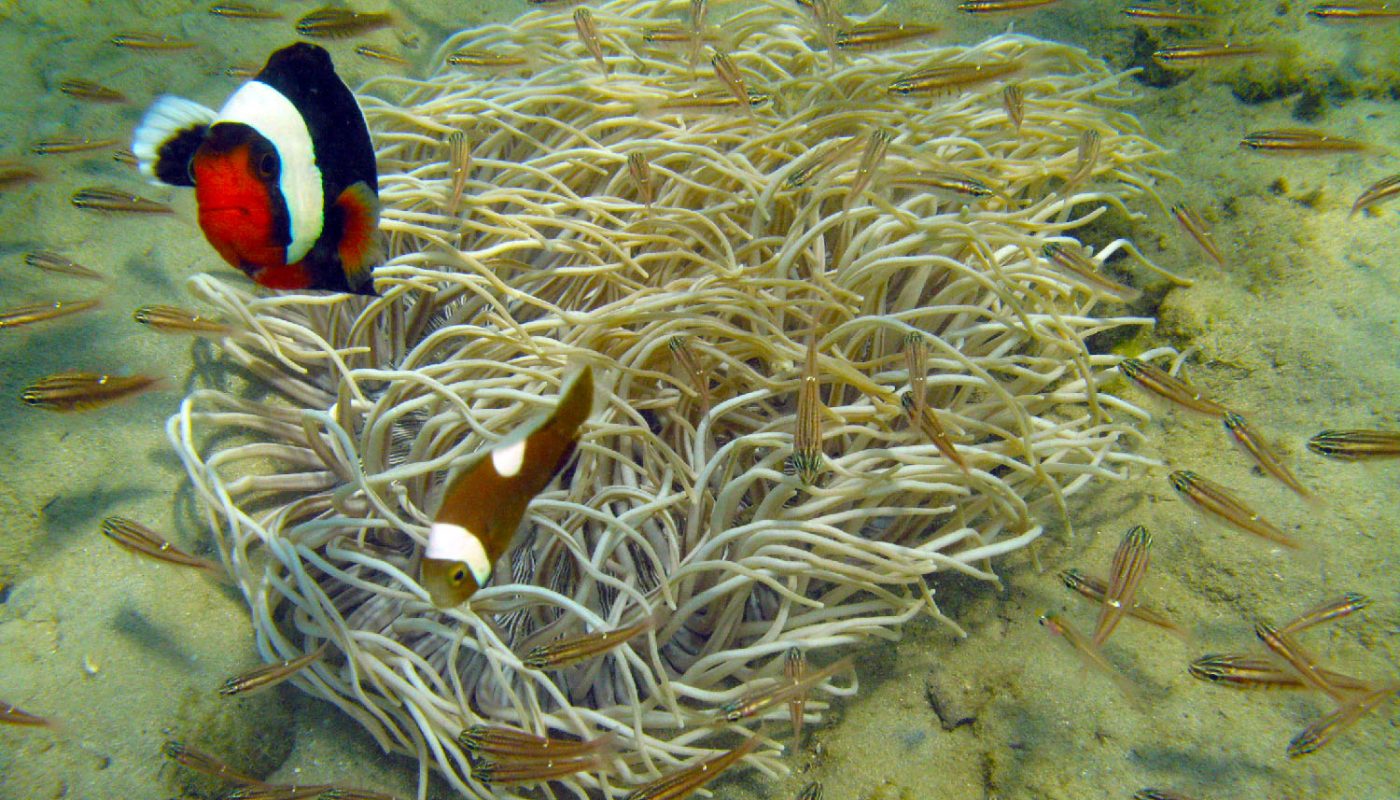

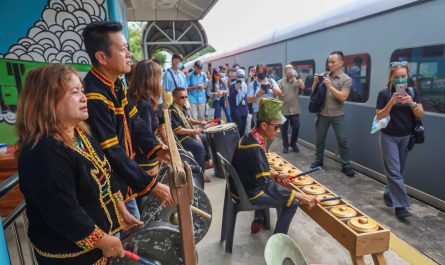
waa cool pix..i could nvr go underwater…kunun takut la…odoi dogo…
Whooaaa…. Nice…
I think I will get mine soon. Open Water PADI will be scheduled in October and Underwater Photography is next. I knew Richard’s wife, Joanne as she came to my clinic few times.
Maybe we can dive together soon…
really makes me feel like wanna go learn diving 🙂
drizad> go for it! so we can dive together next time. it is fun.
Being underwater, I (also) can be very blur blur one….I do not know what type of fishes they are, what’s the diff, plus I am more struggling with the buoyancy than to search for all the creatures. LOL.
hey..come n join us to Sipadan/Mabul next yr 😀
check at my travelkupi
josie> thanx 4 the invitation. surely interested 2 join if i got $$$ that time 🙂
Wahhh so beautiful :O The coral looks all so fantastic. A nice list of colours and shades.
I really like the cuttlefish picture!!
Randall> if u think this is beautiful, u haven’t seen sipadan yet. hopefully i can show u the photos 1 day..
Haha sipdan!! I remember fishing there when I was a kid, to bad its protected now from fishing I think 😛 Although, I heard the diving there is awesome!! Can’t wait to see your pictures 😀